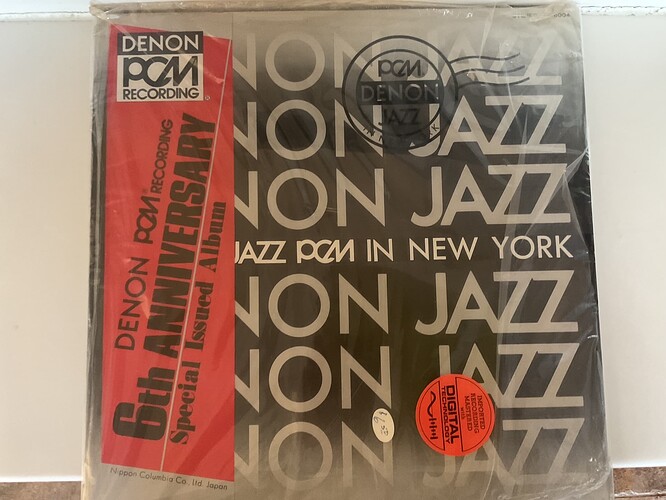They now know how they fly and it’s due to vortices (whatever they are)
Very few recent releases (and by that, I mean within the last twenty-years or more!) have been mastered from analogue sources.
Mastering vinyl from digital sources started in the 1990’s, and has gathered pace since then.
Unless you’re buying a product that specifically states that it’s been mastered from analogue tapes (‘MoFi-gate!’) then assume it’s been mastered from a digital source.
Who records in analog anymore? Very few, very niche… MQA would be a great solution to obtain as close to an analog master as you can get for a vinyl cut…
Here we go again ![]()
I released both digital and vinyl versions of an album on my label last year.
My mastering engineer has been using the same masters for streaming and CD for a while - and for this album he didn’t need to change anything for vinyl.
He doesn’t have a lathe - so the vinyl pressing guys organised the cutting.
When I got back the test pressings the sounded pretty much the same as the digital to me - except the tracks were slightly longer!
Turned out my non speed adjustable Roksan X was running slow! After finding an expensive adjustable power supply I now have it running at the same speed!
I have an RME ADI2/4 pro which does the RIAA adjustment digitally - so gave me a good excuse to rip the vinyl and compare to the digital master.
They sounded very similar indeed, although I ended up tweaking the hi frequency EQ (similar to adjusting the cartridge loading) on the RME to match the two.
As discussed above - except for direct to vinyl releases - it’s now very rare to find something that has been cut from analogue straight to vinyl
There is a completely different process for great turntables with separate Phono Stage PREamps…etc. A friend who has relatively unlimited budget has $50K or so in each of his turntable systems…so, clearly, it have some AUDIOPHILE advantage as he prefers vinyl and Reel2Reel audio. Examine the cartridge alone and you see lower channel separation and some crosstalk which “scientifically” imparts a difference in the soundstage.
I have an audiophile grade Sound Room and stream digital via my i7 NUC; through SONORE’s Signature Rendu Deluxe system of noise isolation and error correction; 1000W/ch monoblocks and Silversmith Ribbon speaker cables into KEF 105.2 Speakers… but I don’t have a good enough turntable to compete with the perfection of DSD recordings if done well.
Few recordings have been analog since the early 90’s when even the smallest studios could afford digital equipment. Big studios had been doing digital since the early 80’s, with some in the late 70’s. For example, Madonna’s “Like A Virgin” album goes out of its way to let you know they used the latest digital recording technology.
The only differences have been the masters. I’d say good artists usually go out of their way to make a vinyl-specific master which puts more emphasis on what vinyl playback hardware is better at or simple ensures that the vinyl has its own sound. It’s pretty boring when an artist allows use of the same master intended for streaming/download/CD onto vinyl. Somehow it can sound as though it has had all the life drained out of it. So, there’s clearly steps that could be taken to manipulate the source so that it sounds good when played back on vinyl and not everyone bothers.
Half-speed mastering is the only thing which has a shot at drawing out more high frequency detail from a studio’s digital master tape but ultimately that mastering engineer is just focusing your attention on the high end, which could probably be done with digital playback devices too. Even those made from original analog tapes involve an initial digital capture at the biggest studios.
Vinyl gives you a nice physical entity but it’s only something worthwhile when the effort has been put in to make it unique and that uniqueness has nothing to do with the media itself.
